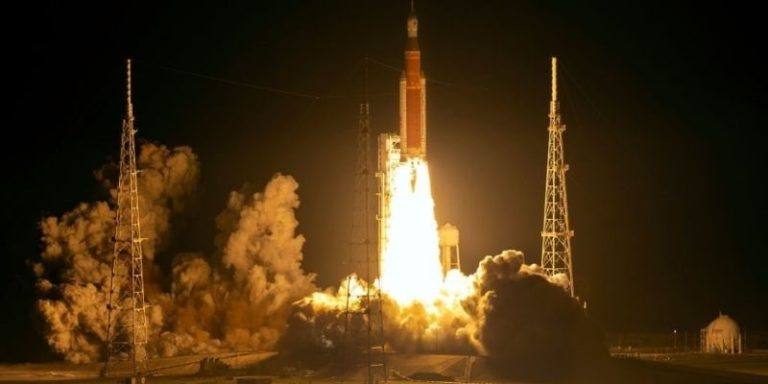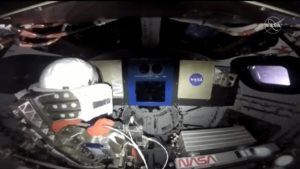Artemis Mission Hopes to Put More Humans on the Moon
What new information can be gained from this exciting program?
By: Kirsten Brooker | November 16, 2022 | 669 Words

(Photo by Kevin Dietsch/Getty Images)
Fifty years after the first man stepped foot on the moon, NASA’s Artemis Mission has plans to do it again. This time around, the space agency hopes that, once on the moon, astronauts will be able to stay there for an extended amount of time. Phase 1 of the program is an unmanned research mission, which launched at 1:47 a.m. Eastern Standard Time on November 16. Phase 2 will take astronauts into space, and Phase 3 aims to finally land humans on the moon once again.
NASA’s Artemis webpage states that its goal is to “establish the first long-term presence on the moon,” an aim it hopes to achieve by working with businesses and international space agencies.
Artemis Mission – Phase 1
Originally set to lift off in 2021, the first mission, Artemis 1, finally launched from the Kennedy Space Center in Florida. The goal of the first operation is to gather data on the deep-space radiation environment and to learn other helpful information. Orion, the capsule, will spend six weeks in lunar orbit. Ultimately, Artemis 1 is a test run to ensure that Orion can safely carry humans to the moon.

A view of Earth as seen from the Artemis 1 Orion capsule (Image credit: NASA TV)
Though no humans are aboard the Artemis 1 spacecraft, there will be some passengers on the ship. First on the list is a mannequin named Commander “Moonikin” Campos. His first name was chosen by the public, while his last name honors Arturo Campus, one of the engineers who worked on the Apollo 13 mission.
Another lucky traveler is Snoopy! The stuffed animal was there to help scientists know when the ship reached the point of microgravity, as the light and fluffy object could float without damaging any equipment.
Accompanying Snoopy is Shaun the Sheep, chosen to represent the European Space Agency (ESA). An official from the agency, David Parker, commented: “This is an exciting time for Shaun and for us at ESA. We’re woolly happy that he’s been selected for the mission… it’s a giant leap for lambkind.”
Also on the craft are more than 3,000 Artemis patches and stickers, 500 US flags, a seed for a sycamore tree, a pebble from the Dead Sea, Lego figures, a bolt from Apollo 13, and a USB stick containing poems and drawings about space by students and other citizens.
About nine hours into the flight, Artemis sent back a photo of Earth from space as well as an image of the craft’s interior. At the time, the capsule was more than 57,000 miles from Earth, which is only about one-fifth of the way to the moon. It was moving at nearly 5,500 miles per hour.
“This view of Earth captured from a human-rated spacecraft not seen since 1972 during the final Apollo mission some 50 years ago,” NASA spokesperson Sandra Jones said during a live broadcast. “The views of our blue marble in the blackness of space now capturing the imagination of a new generation – the Artemis generation.”
Artemis 2

A view inside the Artemis 1 Orion capsule (Image credit: NASA TV)
The second planned launch will take human passengers farther into space than ever before. The crew, made up of four people, will fly Orion almost 4,600 miles, past the far side of the moon. The eight-to-ten-day mission will collect valuable data for NASA and the scientists involved.
Artemis 3
After leaving Earth, the third Artemis mission will dock with the Lunar Gateway, a small space station orbiting the moon. Two of the passengers will visit the never-before-seen south pole of the moon. In addition, the astronauts will spend a week exploring different areas and sampling ice and water on the moon’s surface.
If the Artemis 1, 2, and 3 missions are successful, NASA has plans to continue its exploration of the moon. Its grand plans don’t stop there, though. In the agency’s words: “Then, we will use what we learn on and around the Moon to take the next giant leap: sending the first astronauts to Mars.”
















